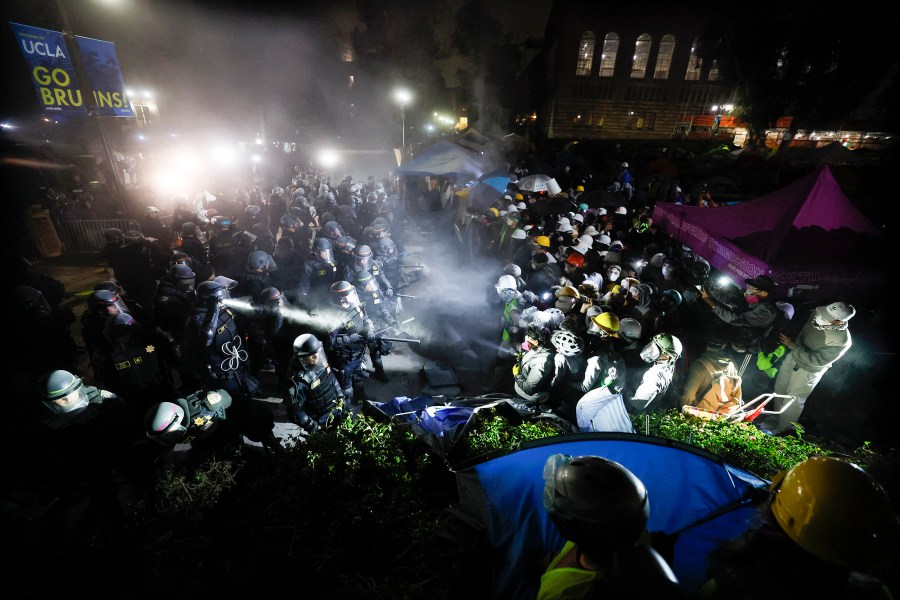Pro-Palestinian protests have sprung up at over 150 colleges across the country to object to the U.S.’s backing of Israel’s brutal military operation in Gaza. The protests, many of which have involved outdoor Gaza solidarity encampments and civil disobedience, have faced severe repression. At over 80 of them, police have surveilled crowds, arrested thousands of protesters, dismantled the encampments, and put an end to protester occupations of buildings. These crackdowns, often initiated by the universities themselves, have sometimes involved police clad in riot gear, using tasers, stun grenades, rubber bullets and tear gas. Police have on some occasions beaten and pinned down peacefully protesting students and faculty. President Joe Biden on Thursday acknowledged protesters’ right to free speech, but primarily aligned himself with police crackdowns when he characterized trespassing as non-peaceful protest and declared that “order must prevail.”
Biden should be more worried than ever before about pro-Palestinian protesters’ capacity to disrupt his events.
Despite the suppression efforts, it’s unlikely the movement’s energy is flagging: many protests are still ongoing and have even spread globally. And the over-the-top suppression efforts may have deepened some activists’ commitment to the cause. Biden should be more worried than ever before about pro-Palestinian protesters’ capacity to disrupt his events, dampen enthusiasm for his candidacy among young voters and progressives, and make him look like a weak leader while Republicans hammer home an extremist law-and-order message over protests.
This recent wave of pro-Palestinian encampments, occupations and protests has already achieved a number of wins. At places such as Brown University, Northwestern University and the University of Minnesota, students took down or limited their encampments and protests after winning concessions from administrations on issues like taking steps toward divestment from Israel or scholarships for Palestinian students. While their policy wins have been modest, they illustrate how in a very brief period of time students were able to use pressure to extract policy wins from their universities.

The protests that we’ve seen aggressively quashed have also been successful, but in a different way. Protesters who provoked crackdowns generated an extraordinary amount of attention for their cause by putting their bodies, and in some cases their careers, on the line in order to object to Israel’s U.S.-backed brutalization of Gazans. Israel’s operation in Gaza in response to Hamas’ Oct. 7 terror attacks has been going on for some seven months, and reports of mass civilian death in Gaza have become routinized. The encampments and campus protests which elicited fierce pushback helped ensure that America did not become numb to the rising body count, and made it clear to Democrats that activists are not backing down from trying to make this a top tier issue as Election Day approaches.

These kinds of protests do not necessarily have to garner widespread public support to be effective. Using encampments and occupations to lobby for a political cause is part of a long tradition of student protest — Columbia University protesters specifically cited the precedent and tactics of anti-South African apartheid and anti-Vietnam War activists at their own university as they set up their encampment. The friction that the protests have produced with universities has in turn invited national debate, and encouraged a wave of solidarity that has spread across the country and the world. Historically, these kinds of protests are often not widely popular in the short term, and indeed a recent YouGov poll indicates that a plurality of Americans view them negatively. But the poll also shows that more Democrats and young people support them than not. And that’s critical, because one of the key points of leverage the movement has is threatening to discourage progressive Democrats and young people from voting for the president unless he makes major policy changes.













